
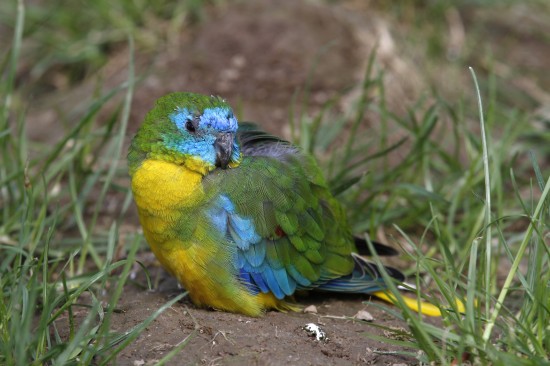
The Turquoise Parrot (Neophema pulchella) is often referred to as the Turquoisine and is a member of the same family of grass parakeets as the Splendids and Elegant Parakeets as well as being a close relative of the Bourke’s Parakeet.
These birds are found in the foothills of the Great Dividing Range as well areas around it across Queensland into New South Wales and occasionally areas of Victoria. They live in the open woodland and savannah where there are certain types of trees usually eucalyptus, white and yellow box, red Stringybark and bimble box amongst others. They use rocky ridges or gullies as well as areas between woodland and grassland as well as cultivated areas. It isn’t a migrating bird and is sedentary in these areas.
The wild colouration of the bird has the male with a bright turquoise face, neck and upper parts being grass green and the tail feathers the same colour but edged with yellow. The wings are bright blue and there is a band of red across the shoulder. The female bird is duller in colour and doesn’t have the red shoulder band while the blue markings aren’t as bright. They are typically 20-22cm in length with a 3cm wingspan.
There are a number of startling mutations that have been bred in captivity including red breasted, light green, opaline, yellow and olive green.
In the wild, these birds live in small groups that may be parents and several of their offspring, or in pairs. Outside breeding season they can be found in groups are large as 50-75 birds with many of these being juveniles.
Once rare in aviculture, since the 1950s Turquoisines have become more popular and therefore more commonly found. They are quiet birds who are tolerant of others birds including other similar species, though they can cross-breed with other Neophema grass parakeets. However, they can be a little more argumentative with others of the same species so usually a single pair of Turquoisines per enclosure is best.
They can live well in an outdoor aviary, in an indoor flight or even in a large cage, though they do like to fly rather than climb so when caged, will need time out of it. Cages are preferably long and high to accommodate their style. You can plant up their home but it isn’t a requirement for their happiness.
Branches from trees such as fir, pine or willow will be a welcome addition to either cage or aviary. They will also like swings and ladders as well as puzzle toys and foraging toys to help them avoid boredom when living in a cage.
Turquoisines are very active birds, probably the most active of the grass parakeet species. They are constantly flying around, searching for food and foraging on the floor. This keenness to forage on the floor can leave them susceptible to parasites so regular worming and other treatments are advisable to avoid problems before they develop.
While they don’t have any particular heat requirements, if they live outdoors, a frost-free night house is the best option. They are also very quiet birds who make gentle melodious sounds so are ideal for people living in built-up areas and in apartments.
There is a special mixture of seed available for Neophema parrots that can be supplemented with Italian millet, weed seeds and fruit. Egg food will be eaten when they are breeding and grit or cuttlefish should always be available.
The seed that they favour include canary, millet and oats as well as weed seeds such as buckwheat, safflower and hemp. A small amount of sunflower seeds is a nice treat and they will enjoy greens such as Swiss chard, spinach, endive and lettuce. Weeds such as dandelion, sowthistle and chickweed can also be offered. They will often enjoy fruits such as apple, orange, pear, banana and pomegranate.
A rearing food mix for when the birds have young can include hard-boiled eggs, wholegrain bread, low fat cheese and carrot that is all mixed together into a crumbly texture. Depending on what they have been raised with, some birds may take live food such as mealworms for extra protein.
Their natural choice for a nesting spot is a tree hollow or even log or posts with the right sized hole in them. Breeding season in the wild is between August and December.
An ideal nest box for these birds is round 18 x 18cm with a height around 12-14cm with an entrance hole around 5.5-6.5cm. Like many parakeets, they don’t build a nest as such but lay their eggs on a layer of bedding or sawdust. Four or five eggs are laid and incubated for around 18-21 days. The young are fed on seeds and egg food and come out of the nest at around four weeks of age. The parents continue to feed for a while longer and by seven to ten months of age, they can be reliably visually sexed.
When first fledging, it is recommended to add something to the bars or mesh of their home so that they can understand the limits of their world, as the young birds are notoriously clumsy. This can be pieces of hessian or greenery, anything that they will not tangle themselves up in but will allow them to understand where the walls are.
It takes around 18 months for them to get their full adult plumage and it can be beneficial to leave them with their parents during this time, as long as there is no sign of aggression. Birds pair off for life and can produce a number of clutches each breeding season.
Although the Turquoisines are a little more aggressive than the other grass parakeet species, they are still perfectly well adapted to living in a mixed aviary with smaller birds such as finches or canaries. They are very quiet so can be housed in nearly any location provided there is sufficient room for their cage. And with their active style, they can give entertainment just as part of their daily routine to those watching.
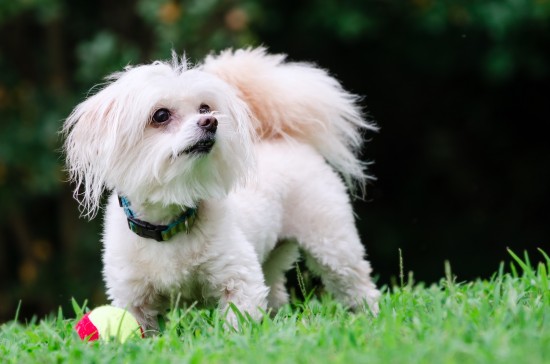 Temperament And Traits Of The Maltipoo Puppy
Temperament And T
Temperament And Traits Of The Maltipoo Puppy
Temperament And T
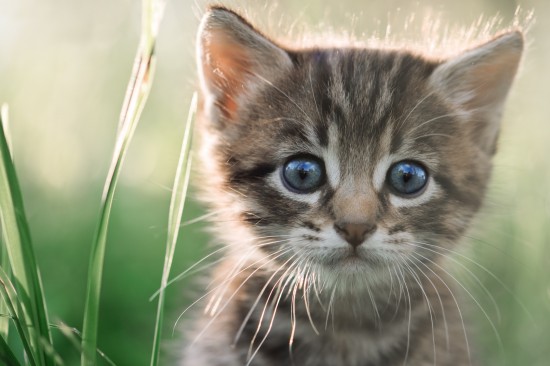 Kitten Emergencies - Signs To Look Out For
Kitten Emergencie
Kitten Emergencies - Signs To Look Out For
Kitten Emergencie
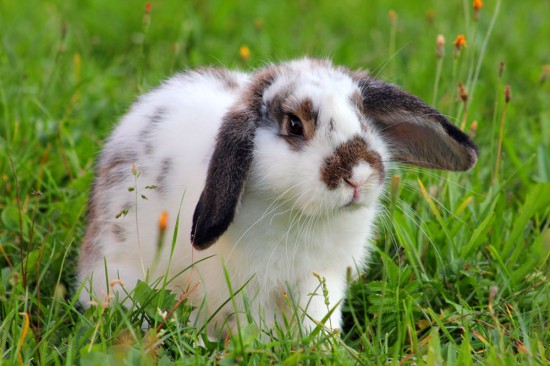 Information About Rabbits For Potential Rabbit Owners
Information About
Information About Rabbits For Potential Rabbit Owners
Information About
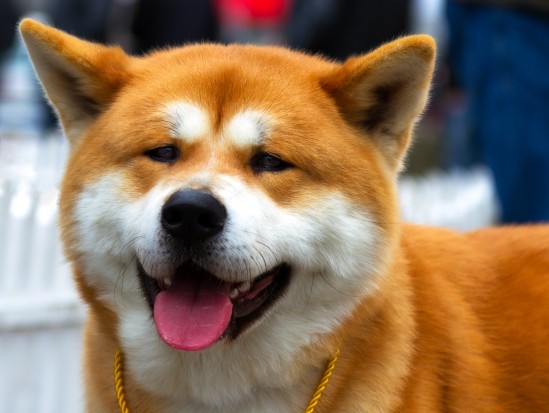 How To Keep Your Akita From Reacting Badly To The Approach Of Another Dog
How To Keep Your
How To Keep Your Akita From Reacting Badly To The Approach Of Another Dog
How To Keep Your
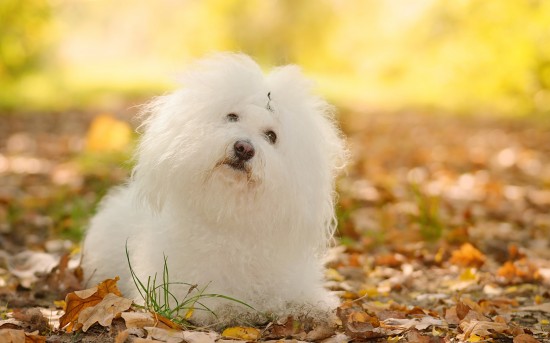 The Bolognese A Healthy Little Dog
The Bolognese A H
The Bolognese A Healthy Little Dog
The Bolognese A H
Copyright © 2005-2016 Pet Information All Rights Reserved
Contact us: www162date@outlook.com